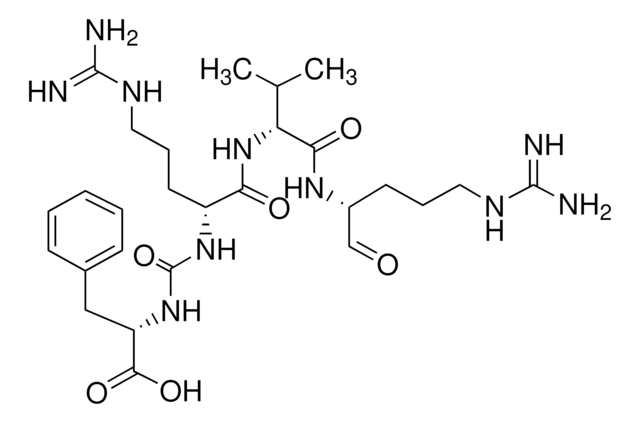D7910
3,4-Dichloroisocoumarin
serine protease inhibitor
Synonym(s):
3,4-DCI, 3,4-Dichloro-2-benzopyran-1-one
About This Item
Recommended Products
Quality Level
Assay
≥98% (TLC)
form
powder
solubility
ethyl acetate: 49.00-51.00 mg/mL, clear, colorless to faintly yellow
storage temp.
2-8°C
SMILES string
ClC1=C(Cl)c2ccccc2C(=O)O1
InChI
1S/C9H4Cl2O2/c10-7-5-3-1-2-4-6(5)9(12)13-8(7)11/h1-4H
InChI key
SUGXUUGGLDCZKB-UHFFFAOYSA-N
Looking for similar products? Visit Product Comparison Guide
Application
Other Notes
Quantity
Substrates
Signal Word
Danger
Hazard Statements
Precautionary Statements
Hazard Classifications
Acute Tox. 3 Oral - Eye Irrit. 2 - Skin Irrit. 2 - STOT SE 3
Target Organs
Respiratory system
Storage Class Code
6.1C - Combustible acute toxic Cat.3 / toxic compounds or compounds which causing chronic effects
WGK
WGK 3
Flash Point(F)
Not applicable
Flash Point(C)
Not applicable
Personal Protective Equipment
Choose from one of the most recent versions:
Certificates of Analysis (COA)
Don't see the Right Version?
If you require a particular version, you can look up a specific certificate by the Lot or Batch number.
Already Own This Product?
Find documentation for the products that you have recently purchased in the Document Library.
Customers Also Viewed
Articles
Elastase application index for understanding leukocyte elastase, a 29KDa serine endoprotease.
Uncover properties and applications of the cysteine protease papain and find inhibitors, substrates, and other papain products.
Our team of scientists has experience in all areas of research including Life Science, Material Science, Chemical Synthesis, Chromatography, Analytical and many others.
Contact Technical Service










